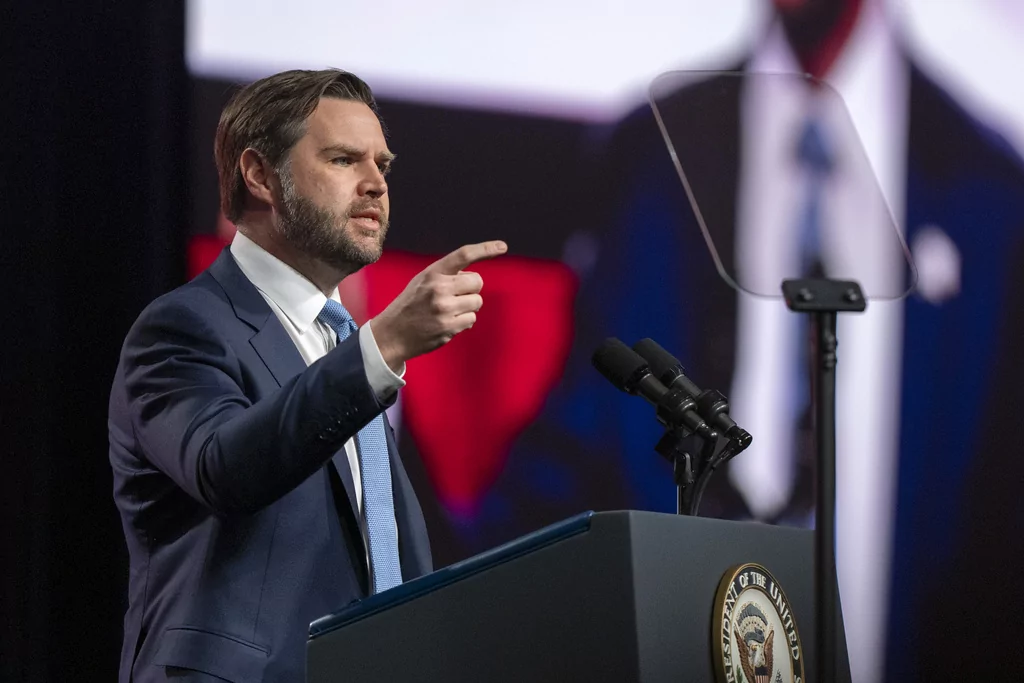

Vice President JD Vance laid out the Trump administration‘s economic philosophy in a speech to technology company founders, saying that the United States must end its addiction to “cheap labor” while continuing to innovate.
“The fundamental goal of President Trump’s economic policy is, I think, to undo 40 years of failed economic policy in this country,” he said Tuesday at the American Dynamism Summit in Washington, D.C. “For far too long, we got addicted to cheap labor, both overseas and by importing it into our own country — and we got lazy.”
Vance, a former venture capitalist who grew up in an Ohio town decimated by the demise of its steel mill, acknowledged what he said is a tension between tech optimists and Trump populists.
Calling himself a member of both camps, the vice president argues there is a way to merge the two. Innovation will create jobs if the U.S. does not allow its domestic workforce to be undercut by cheap labor from foreign countries or illegal immigration, he said.
“It should be no surprise that when we send so much of our industrial base to other countries, we stop making interesting new things right here at home,” Vance said, using shipbuilding as an example. The U.S. dominated ship manufacturing during World War II but now controls less than 1% of the world’s shipmaking capacity, while China now dominates.
He added that restoring manufacturing and innovation capacity will require sacrifice, namely eschewing the low-wage labor that Vance described as “fundamentally a crutch” that inhibits innovation. While Vance did not say it, that approach would likely result in at least short-term pain in the form of higher consumer costs.
Other members of the Trump administration have made similar claims. Treasury Secretary Scott Bessent, for example, said last week that the American dream does not mean access to cheap goods but rather the idea that citizens can achieve prosperity, upward mobility, and economic security.
Vance said that cheap goods, when imported, lead to a deindustrialized United States that is not well positioned to innovate and in which too many people lack meaningful work.
He shared a story from his venture capital days about sitting down for dinner with a tech CEO and expressing his concern that losing good middle-class jobs would destroy the dignity and purpose of work for those who held them, even if they could be financially made whole. The CEO countered that work could be replaced with “digital fully immersive gaming.”
“Then my wife texted me underneath the table and said, ‘We have to get the hell out of here,’” Vance recalled. “‘These people are effing crazy.’”
That vision is now being tested as the Trump administration slaps tariffs on China and even on U.S. allies such as Canada and Mexico while promising to spur manufacturing employment at home. The stock market and regular citizens are watching nervously to see if the economy will venture into a recession, even as the president and vice president claim things will be better in the long run.
According to Vance, the goal is to reverse 40 years of economic policy in the U.S., which he says has hollowed the country’s manufacturing base and has been particularly detrimental to places like his home state of Ohio.
He argued that it is not easy, and not necessarily desirable, to separate the making of things from the designing of things or to send important jobs overseas to countries that may or may not be hostile to the U.S.
“Whether we were offshoring factories to cheap labor economies or importing cheap labor through our immigration system, cheap labor became the drug of Western economies,” Vance said.
Trump’s tariff icon: Why he’s praising 25th President William McKinley
The vice president said the U.S. will have more innovation and a healthier economy in the long term if it can wean itself off cheap labor, a change that may prove easier said than done.
“Indeed, I’d say that globalization’s hunger for cheap labor is a problem precisely because it has been bad for innovation,” Vance said. “Both our working people, our populists, and our innovators gathered here today have the same enemy, and the solution, I believe, is American innovation.”